Mohanthal is a traditional sweet hailing from Gujarat and Rajasthan. The soft, melt-in-your-mouth texture of this rich and decadent mithai is complemented by the slightly grainy crunch of crumbled besan, setting it apart from besan barfi.
Mohan is another name for Lord Krishna, and it is said that this sweet is a favorite of his. Mohan thal is perfect for the festive season of Janmashtami, Navratri, or Diwali.
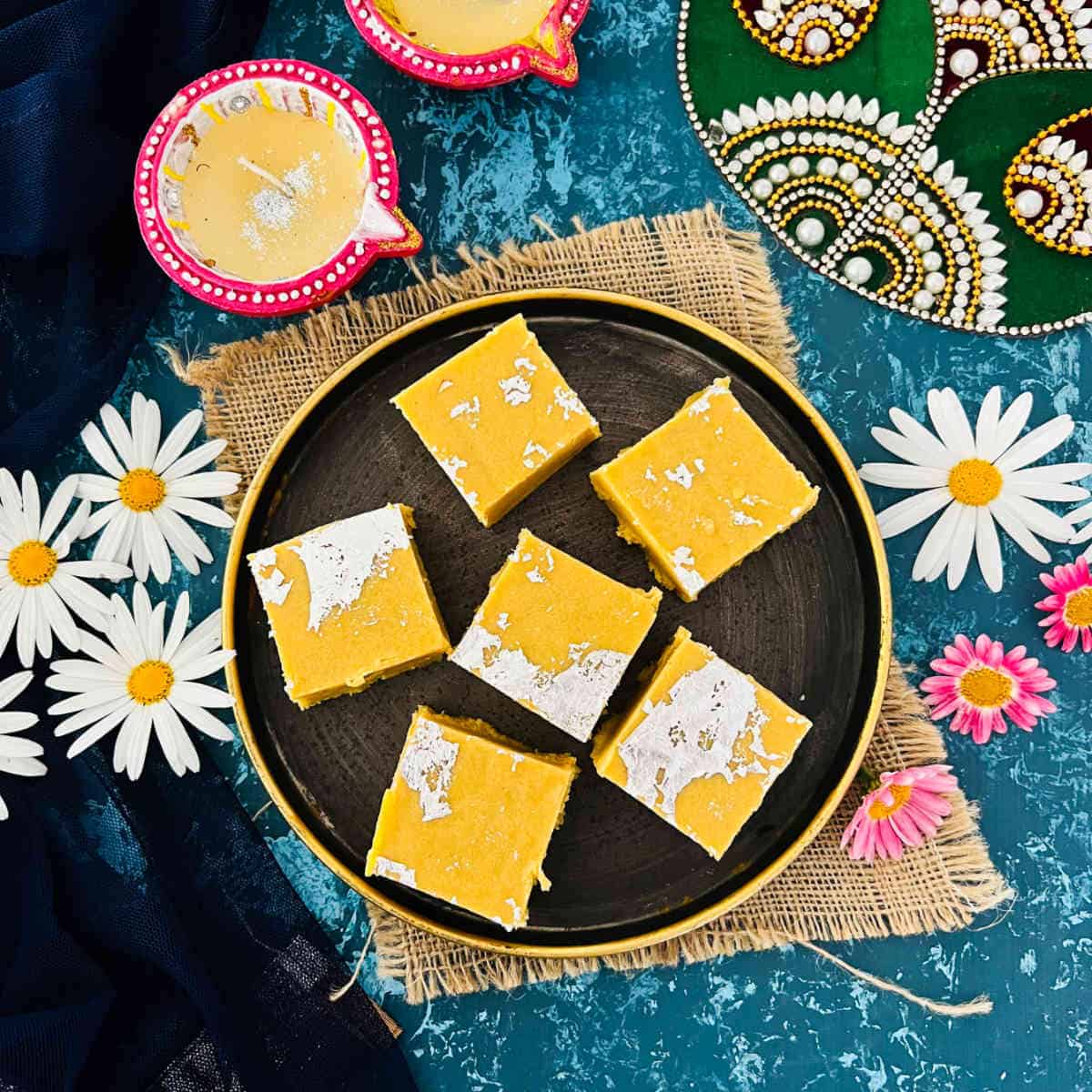
Why you will love this recipe?
- With this reliable, tried, and tested recipe, you can achieve the authentic taste and texture of mohanthal.
- This traditional Gujarati mohanthal recipe contains all the tips and tricks for effortless preparation.
- This decadent and rich sweet is ideal for celebrations and festivals like Diwali.
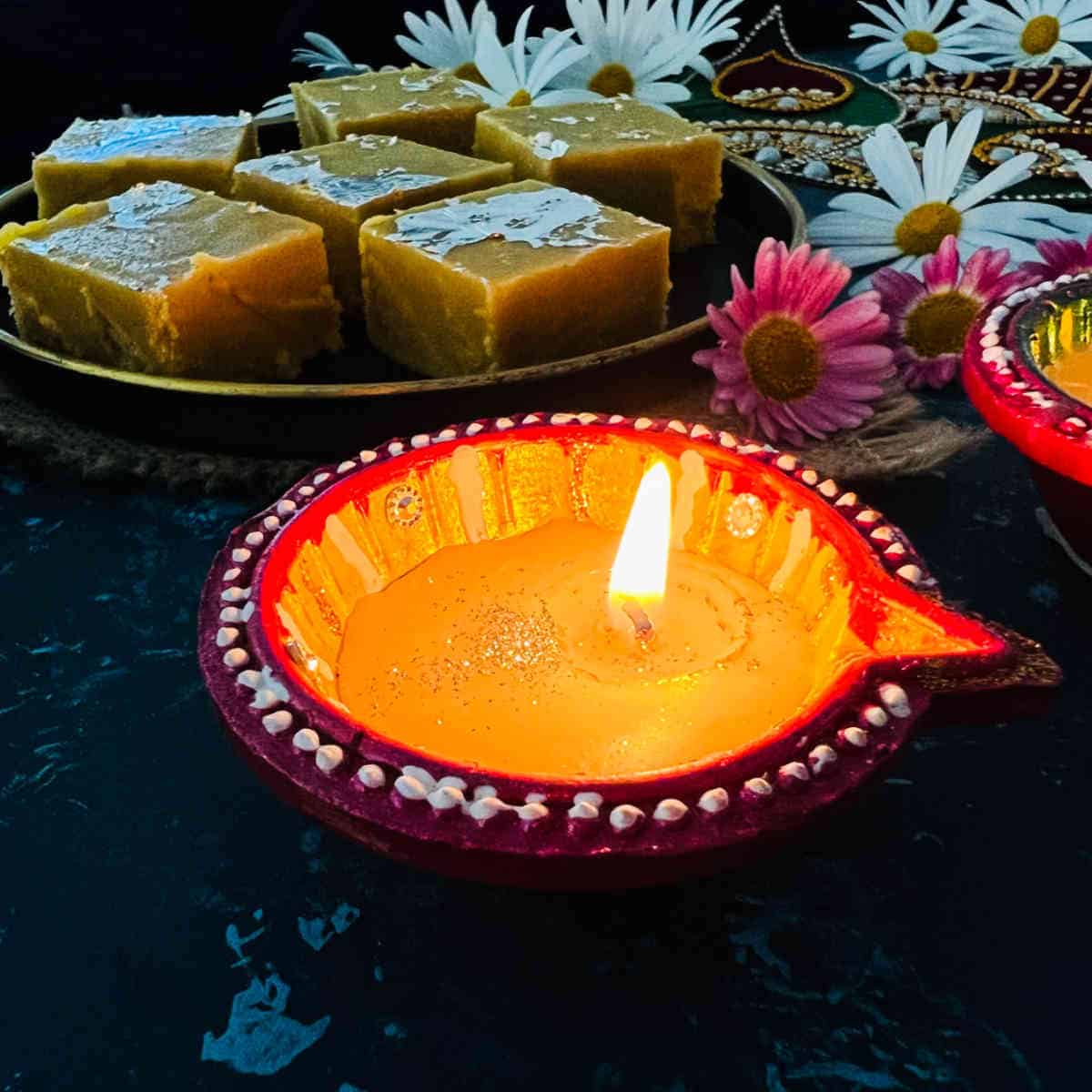
Ingredients
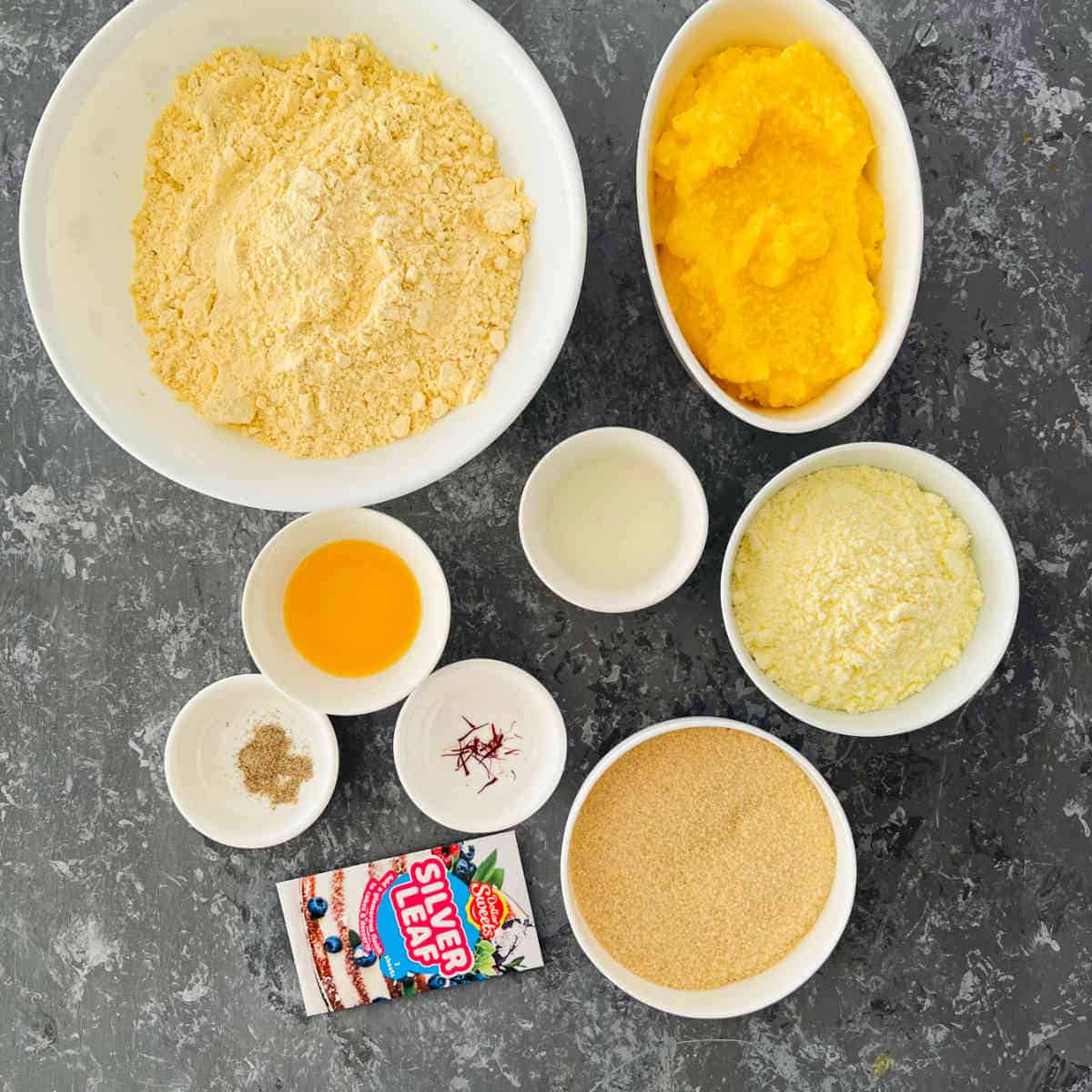
Besan: (gram flour) This is the main ingredient.
Ghee: I have used homemade ghee in this recipe.
Sugar: I have used raw sugar; however, plain white sugar can also be used.
Milk powder and milk: A small amount of milk is used initially to crumble the besan. Milk powder sets this sweet apart from besan burfi. You can also use equal quantities of khoya for a richer taste.
See the recipe card for full information on ingredients and quantities.
Step-by-step instructions
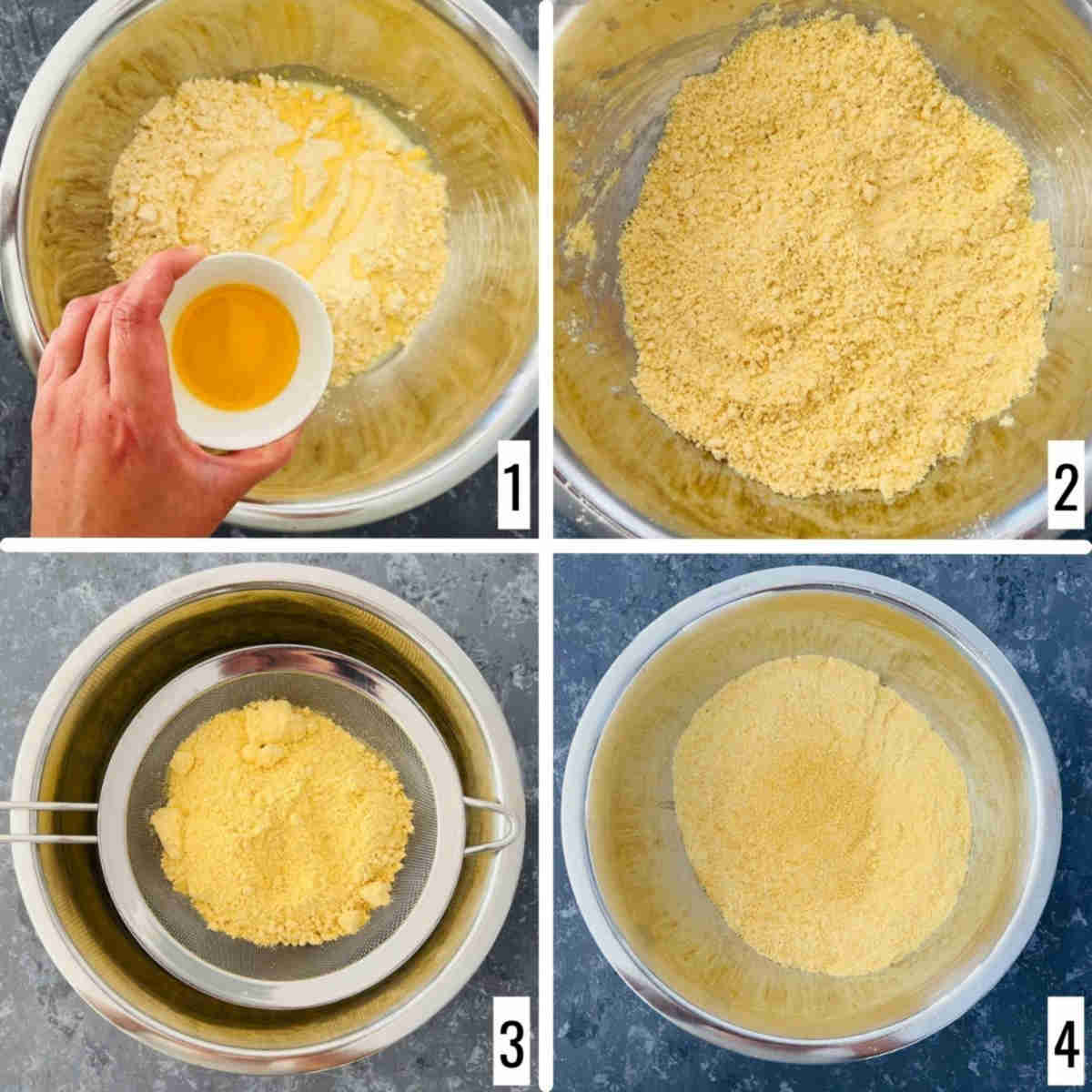
Step 1: Take besan, one tablespoon of ghee, and two tablespoons of milk in a large mixing bowl. Sprinkle milk and mix well. Crumble the besan well using your fingers. Cover and set aside for 30 minutes (images 1 and 2).
Step 2: Once the besan has rested, pass it through a sieve to remove any big lumps. Press the mixture using the back of a spoon or a flat spatula to get as much mixture as possible (images 3 and 4).
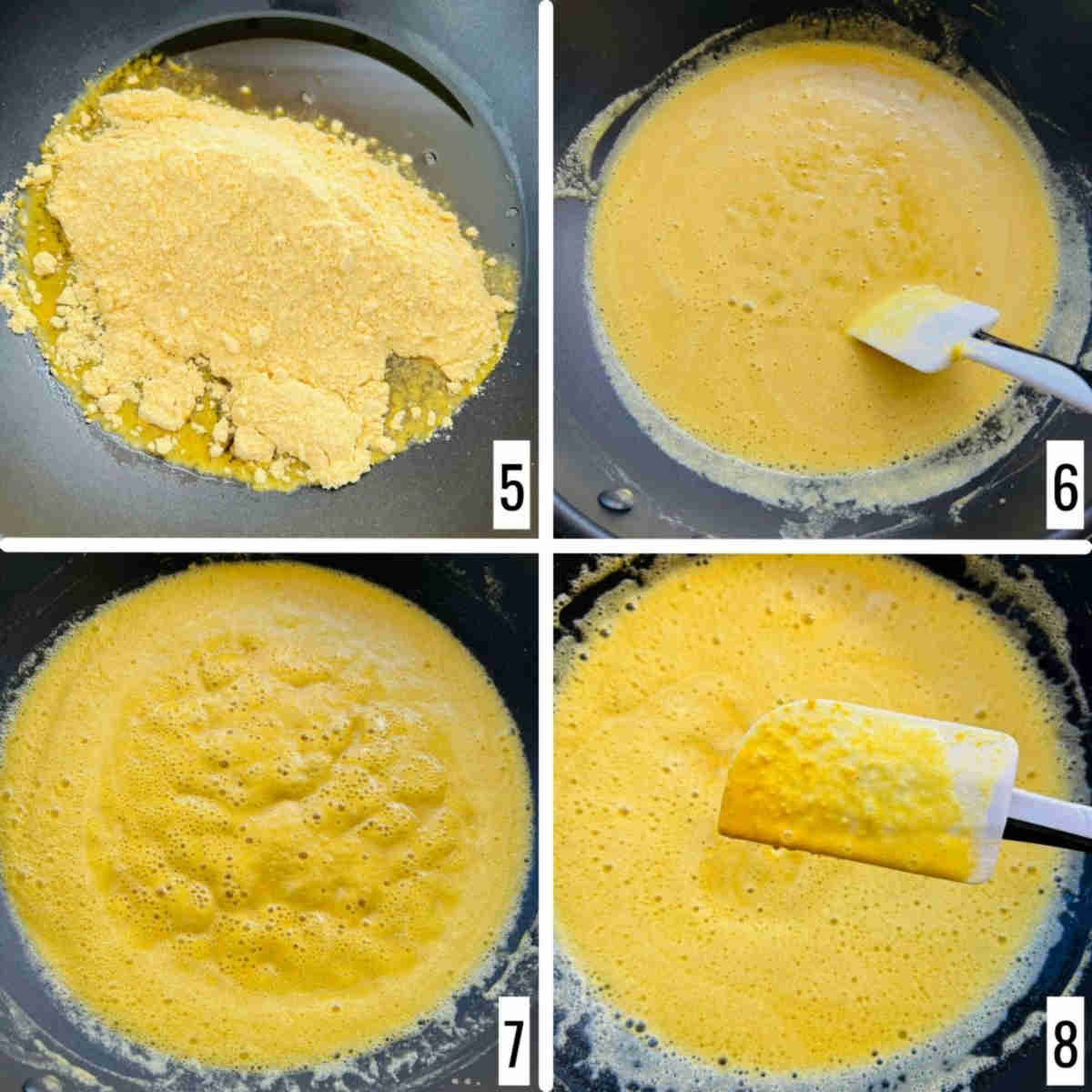
Step 3: In a large pan or kadhai, heat 1¼ cup ghee on medium flame until it is fully melted. Once the ghee melts, turn the heat to low and add the besan flour mixture. Fry the besan on low flame for 15-18 minutes. Continue stirring the mixture continuously. This is the most crucial step of the recipe (images 5 and 6).
Step 4: The mixture will initially become frothy, then get a honeycomb texture and slowly turn golden brown. Turn off the heat and continue stirring on low heat for another 2-3 minutes. Set it aside to cool down (images 7 and 8).
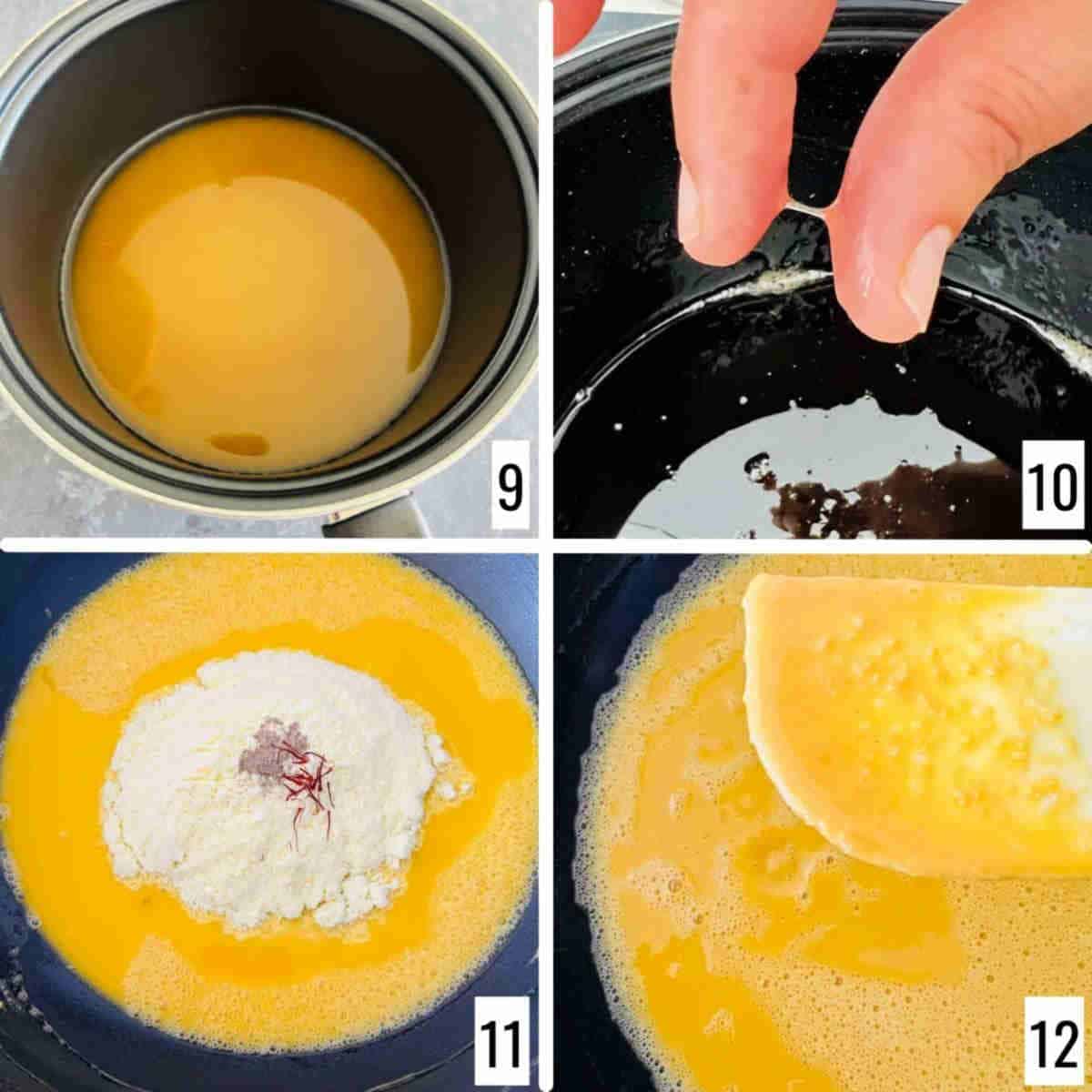
Step 5: In another pan, take sugar and water. Place it on medium heat. Stir the mixture for one minute or until the sugar melts. Once the sugar melts, do not stir (image 9). Let the syrup boil until it reaches one-string consistency (single-thread consistency), about 10-12 minutes. (Image 10 shows the sugar syrup consistency of Gujarati mohanthal).
Step 6: Once the besan cools, add milk powder, cardamom powder, and saffron to it. Mix well to fully incorporate the milk powder, making sure there are no lumps (images 11 and 12).

Step 8: Once the prepared sugar syrup reaches one-string consistency, carefully pour it into the besan. Stir and mix until the whole mixture comes together - see tips section (images 13 and 14).
Step 9: Pour the mixture into the prepared pan/thali and level it using a spatula or the back of a spoon. Allow it to set completely at room temperature. This may take 3-4 hours (images 15 and 16).

Step 17: Once the mohan thal is set, top it with silver foil (chandi ka vark) and cut it using a sharp knife into the desired shape.
Expert Tips
It is important to crumble the besan well after adding milk and ghee (see how to prepare besan in step-by-step instructions). Use your fingers to crumble or take besan between your two palms and rub it well. Do this for at least five minutes. This is the key to getting the grainy texture of Mohan thal. If you skip it, you will have a besan burfi texture.
Do not skip sifting the crumbled besan. There should now be lumps in it.
Do not stop stirring the besan. The mixture will initially become frothy, then get a honeycomb texture and slowly turn light golden. It is important to keep stirring throughout the process.
Once the besan turns light golden, turn off the heat and continue stirring for another 5 minutes. Do not stop stirring immediately, as the residual heat from the pan can burn the besan. Alternatively, transfer the fried besan to another pan to prevent it from burning.
When making the syrup, it is important not to stir after the sugar melts. Let it simmer undisturbed for the first few minutes.
The sugar syrup has to reach a one-string consistency (see image above). To check if the syrup is done, take a few drops of the syrup and let it cool for a few seconds. Take the syrup onto your finger and press it gently between your finger and thumb. If the syrup forms a single thread, it has reached one-string consistency. Alternatively, if you have a candy thermometer, you can place it in the syrup and simmer until the temperature of the syrup reaches 240 F (115 C).
Let besan cool down before adding the syrup. If you add the syrup to the hot besan, it will not be set. Do not stir for too long after adding sugar syrup to besan; otherwise, it will become rubbery.
Also, check out this recipe to make authentic halwa puri for Navratri.
Recipe FAQs
The textures for both are very different. Barfi has a smooth texture, while Mohan thal is grainy. While besan is the key ingredient for both sweets, milk is not used in besan burfi, whereas it is used here.
Place it in an airtight container and store it at room temperature for up to one week. If you want to store it for longer, place it in the refrigerator. However, it is important to place it on the counter for 3-4 hours and bring it to room temperature before serving.
I have not tried making it with jaggery. However, I use raw sugar, and it works perfectly in this recipe.
In my recipe, I have used regular besan, which works perfectly and is easily available. You don't have to use the coarse variety of besan (also called laddu besan) to make it.
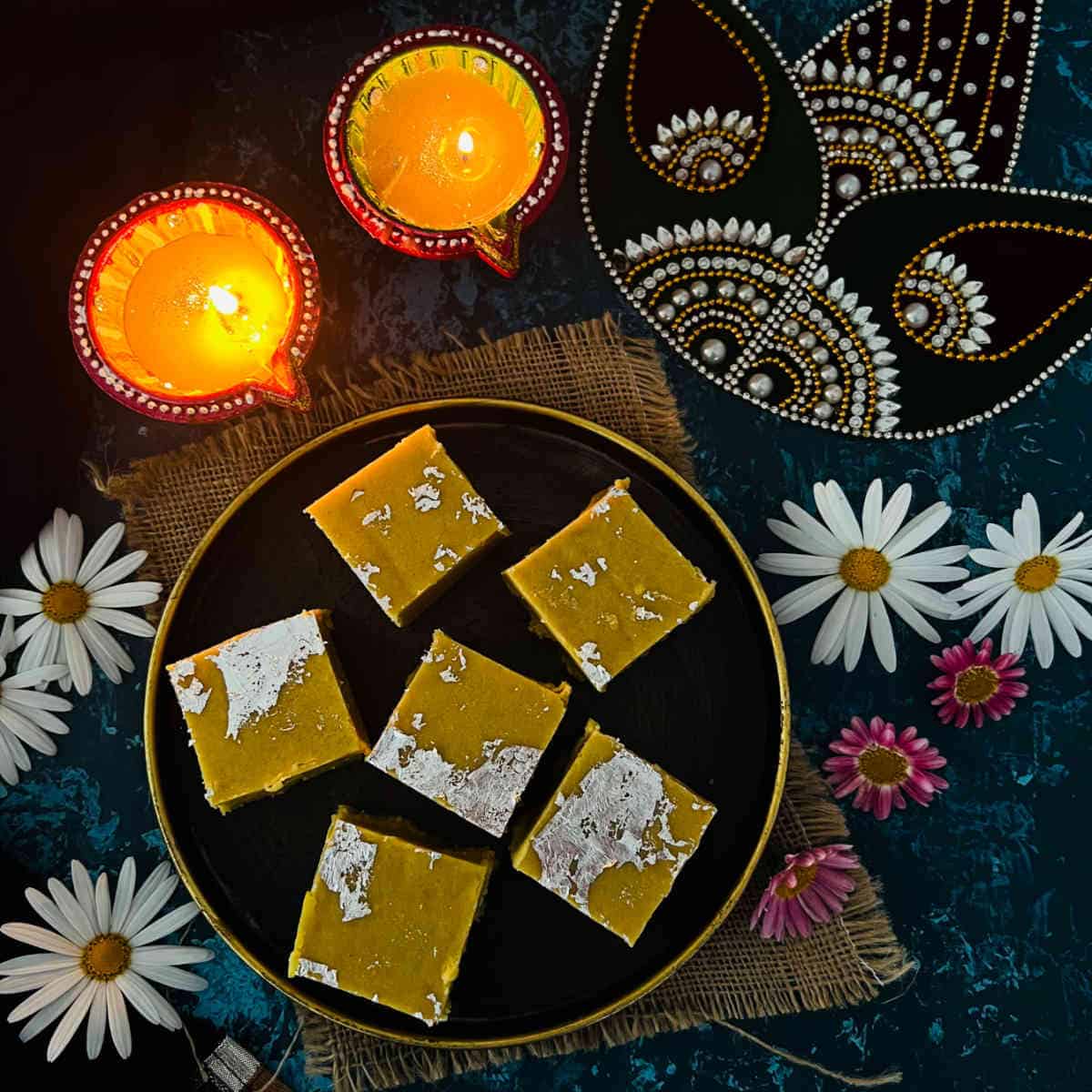
More authentic Indian sweets
If you tried this Mohanthal Recipe or any other recipe on my website, please leave a ? star rating and let me know how it went in the ? comments below.
Recipe card
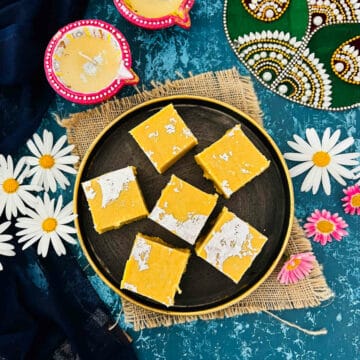
Mohanthal
Ingredients
For the besan mixture:
- 2 cups besan (gram flour or chickpea flour)
- 1 tablespoon ghee (use store-bought or homemade ghee)
- 2 tablespoon milk
Other ingredients:
- 1¼ cup ghee
- ¾ cup milk powder
- ½ teaspoon cardamom powder
- ½ teaspoon saffron
- Edible silver foil chandi ka varq (optional)
For the sugar syrup:
- 1 cup sugar see notes
- ⅔ cup water
Instructions
Prepping the besan:
- Take besan, 1 tablespoon of ghee, and 2 tablespoons of milk in a large pan. Mix well and crumble the besan well using your fingers.
- Crumble for 4-5 minutes until the besan becomes grainy. Cover and set aside for 30 minutes.
- Once the besan has rested, pass it through a sieve to remove any big lumps. Press the mixture using the back of a spoon to get as much mixture as possible. Set it aside.
Frying besan:
- In a large pan or kadhai, heat 1¼ cup ghee until it is fully melted
- Once the ghee melts, turn the heat to low and add the besan mixture.
- Fry the besan on low heat for 15-18 minutes.
- Continue stirring the mixture continuously. The mixture will initially become frothy, then get a honeycomb texture and slowly turn light golden.
- Turn off the heat and continue stirring for another 3-4 minutes. Set it aside to cool down.
Making sugar syrup:
- In another pan, take sugar and water. Place it on medium heat.
- Stir the mixture for one minute or until the sugar melts.
- Once the sugar melts, do not stir. Let the syrup boil until it reaches one string consistency (about 10-12 minutes).
Setting Mohan thal:
- Line or grease a 20 cm X 20 cm tray or a 30 cm round thali.
- Once the besan cools, add milk powder, cardamom powder, and saffron to it.
- Mix well to fully incorporate the milk powder, making sure there are no lumps.
- Once the sugar syrup reaches one-string consistency, carefully pour it into the besan.
- Stir and mix until the whole mixture comes together.
- Pour the mixture into the prepared pan/thali and level it using a spatula or the back of a spoon.
- Allow it to set completely at room temperature. This may take 3-4 hours. Alternatively, place it in the refrigerator for 30 minutes to set.
- Once the mohan thal is set, top it with silver foil (chandi ka vark) and cut it into squares.

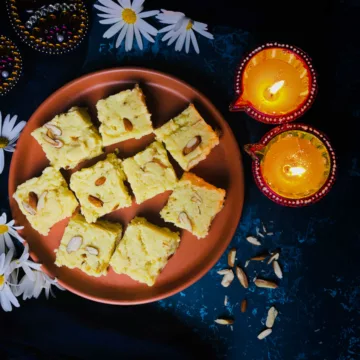
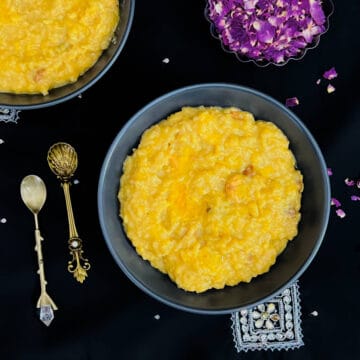
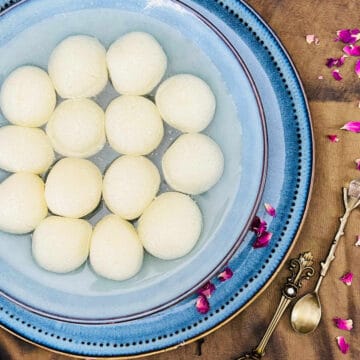

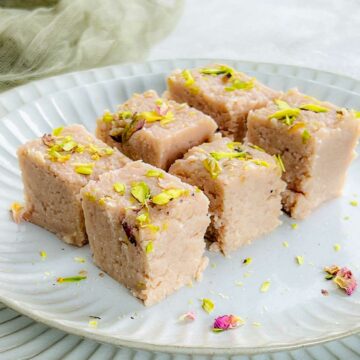
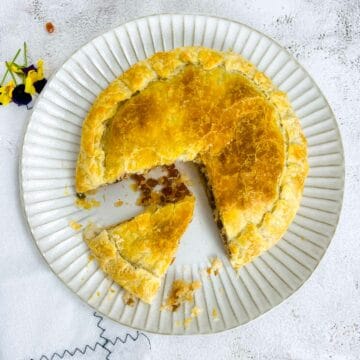
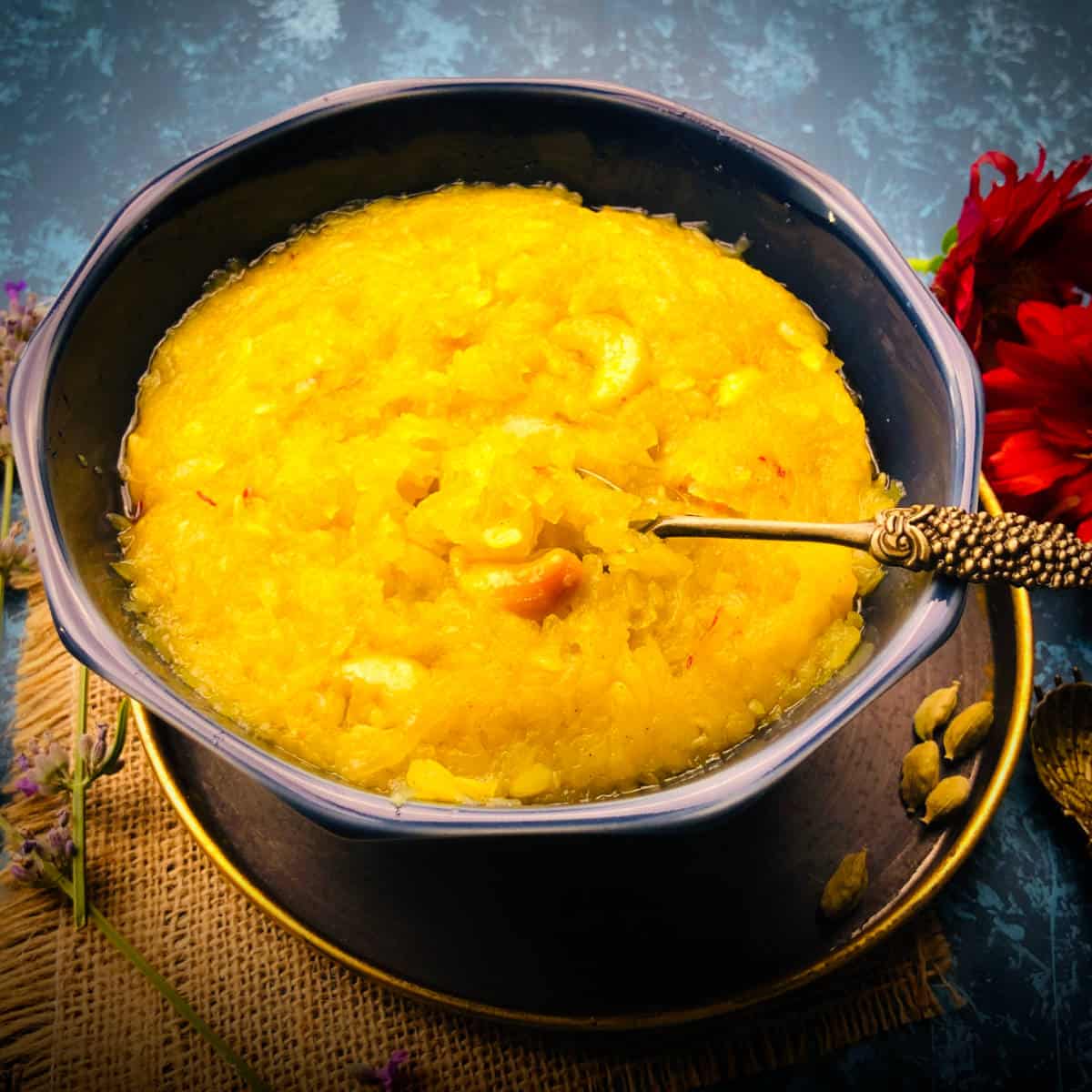
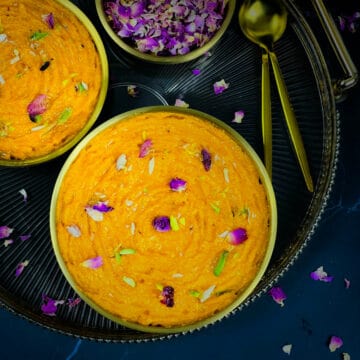
Comments
No Comments